June 16: German Pavilion + CaixaForum
The next day we visited Mies van der Rohe's famous Barcelona Pavilion, or German Pavilion depending on your perspective, built for the city's 1929 International Exhibition.
9675
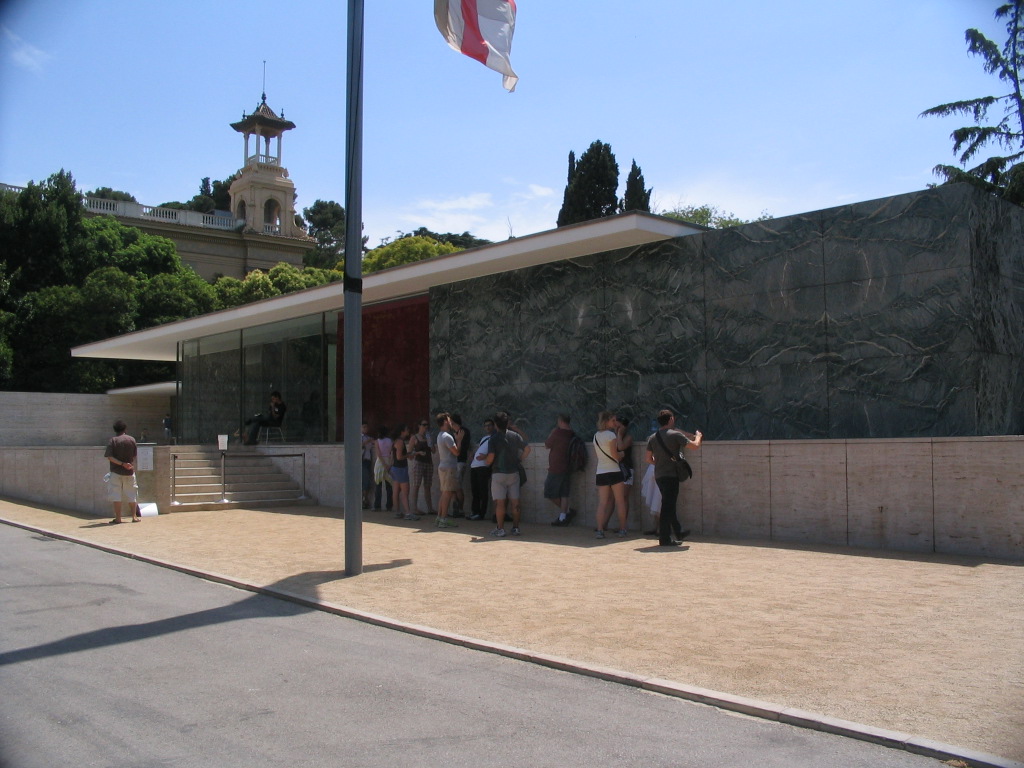
Jonathan, watch out for that wall!
9682
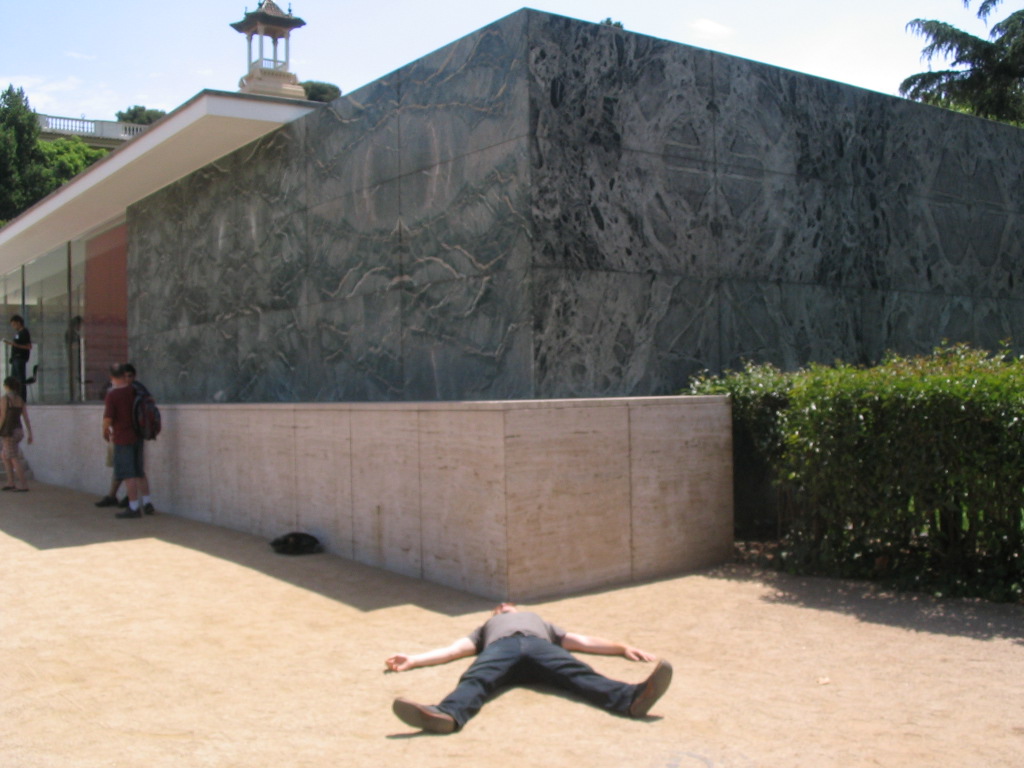
Oh dear, it got him.
9685
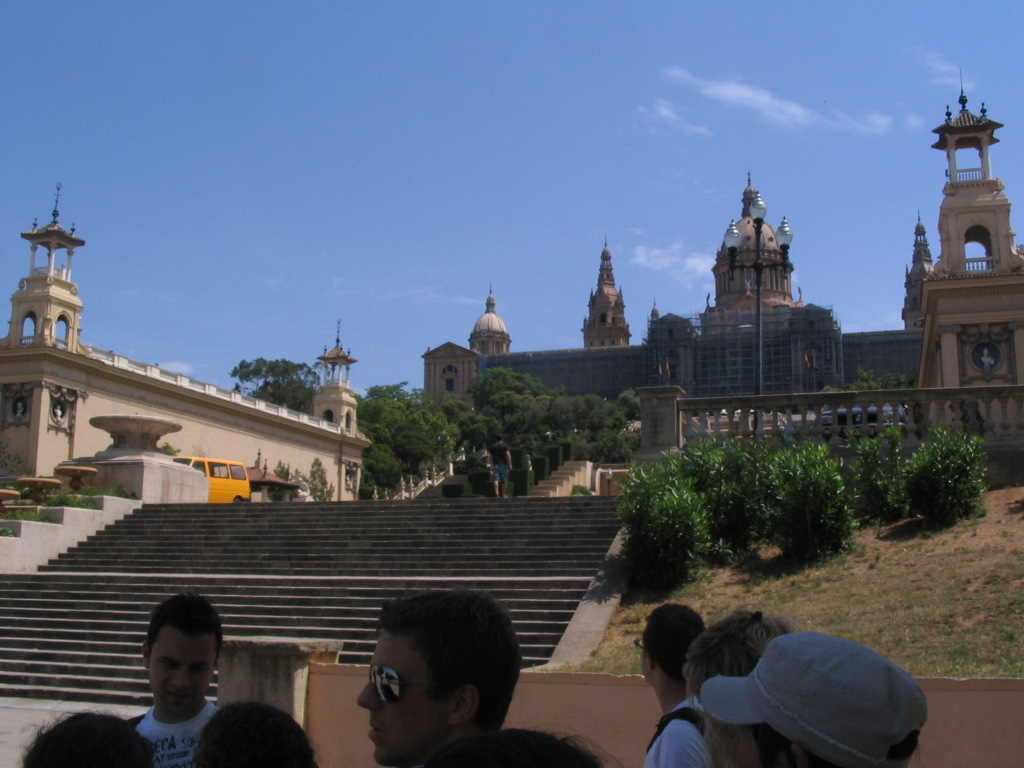
The Pavilion is just down the hill from the Palau Nacional (National Palace), constructed as the main building of the International Exhibition. The Palau sits partway up the Montjuïc hillside, with buckets of stairs cascading down from it.
9689
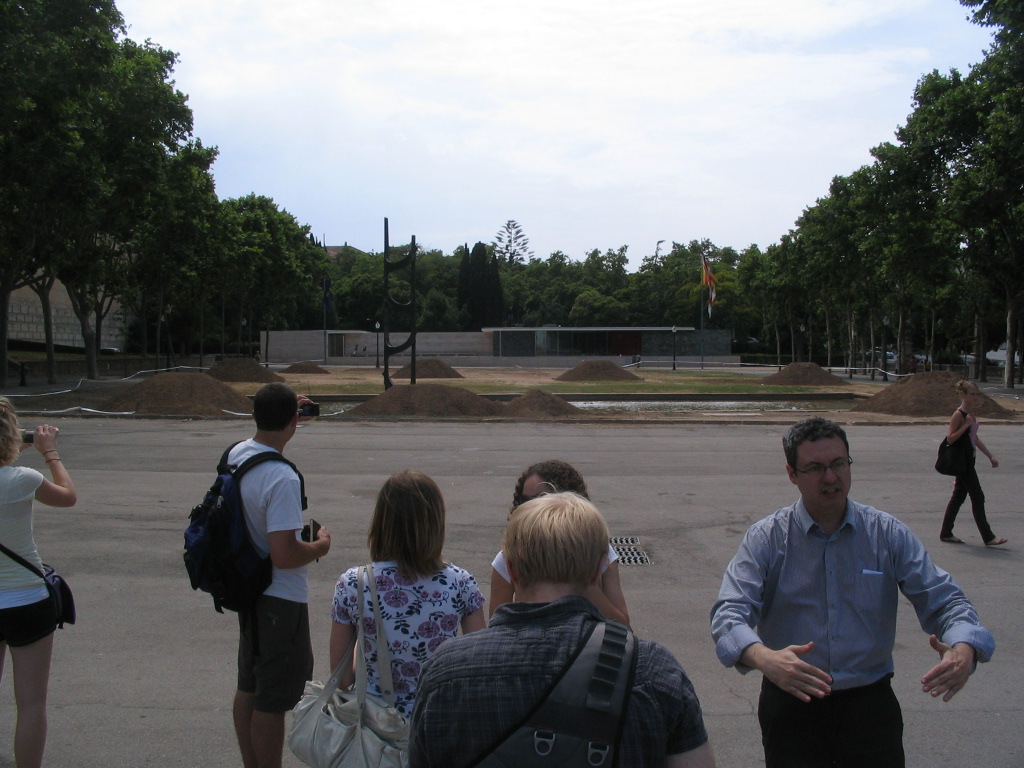
A look at the full extent of the Pavilion from across the way; in its horizontality it almost disappears from view at just that small distance.
9690
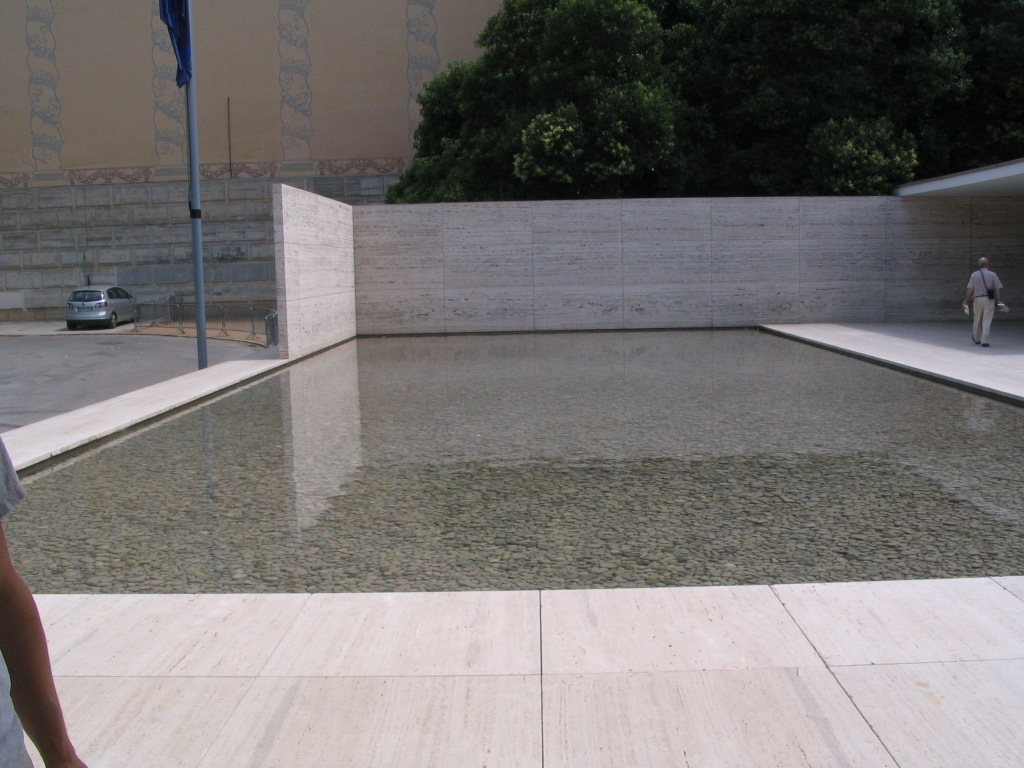
The Pavilion is composed mostly of opulent materials shaped into extremely simple geometry.
9693
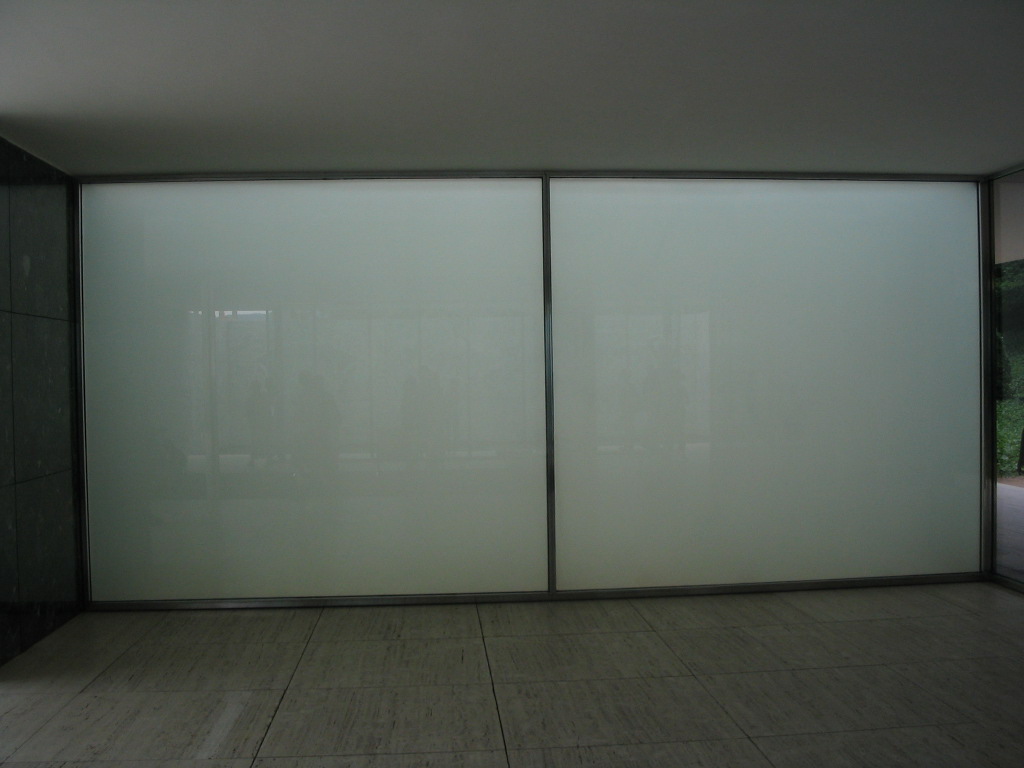
A translucent wall full of mystery.
9694
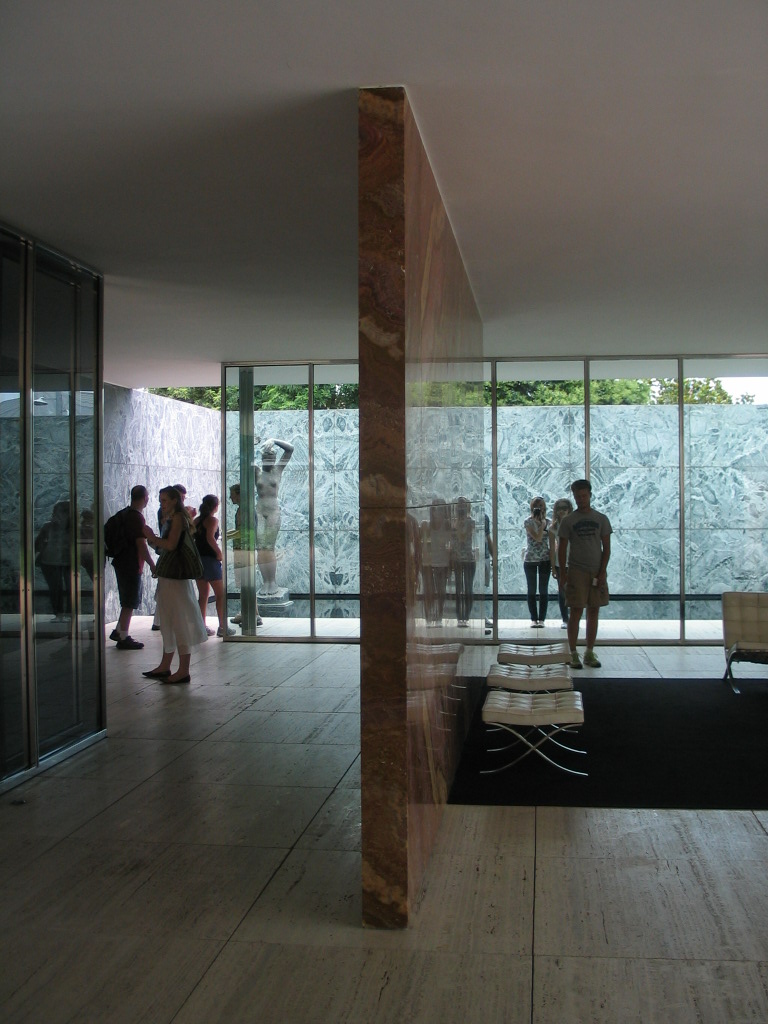
The building is a great lesson in how to produce create complex spaces from very little actual building. The strong connection between inside and outside is very appealing, such as the walled-in pool at the north end here.
9701

The sky over the north pool.
9703
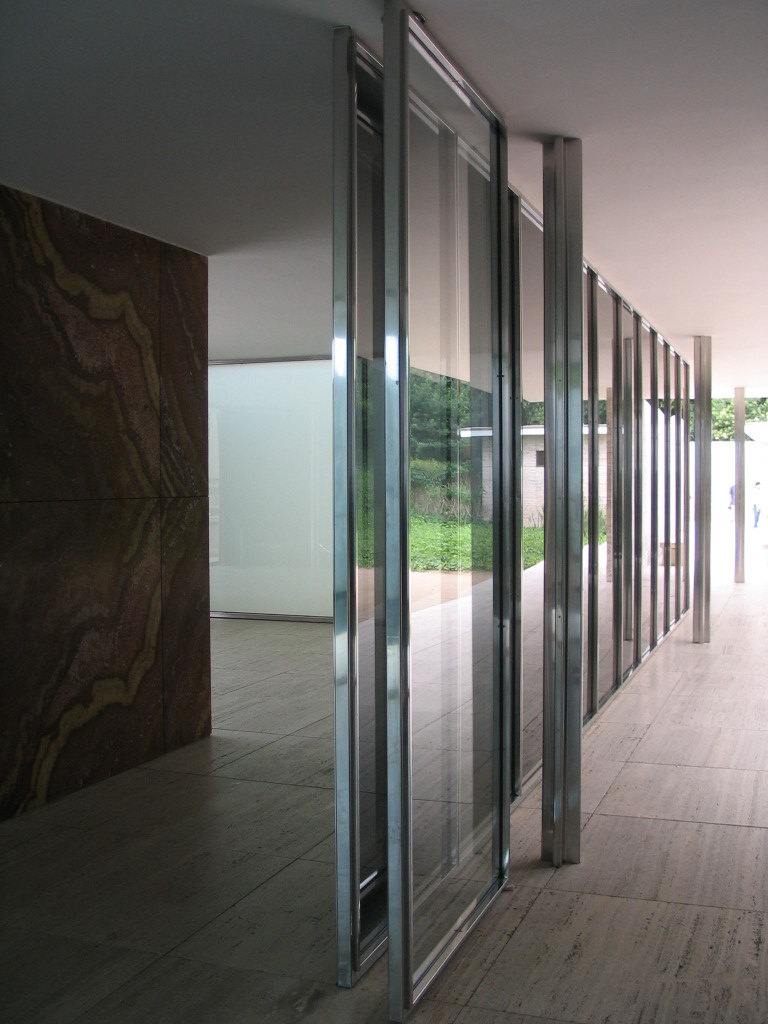
A look through the building to the south. Note the symmetry of the stone blocks at left.
9705
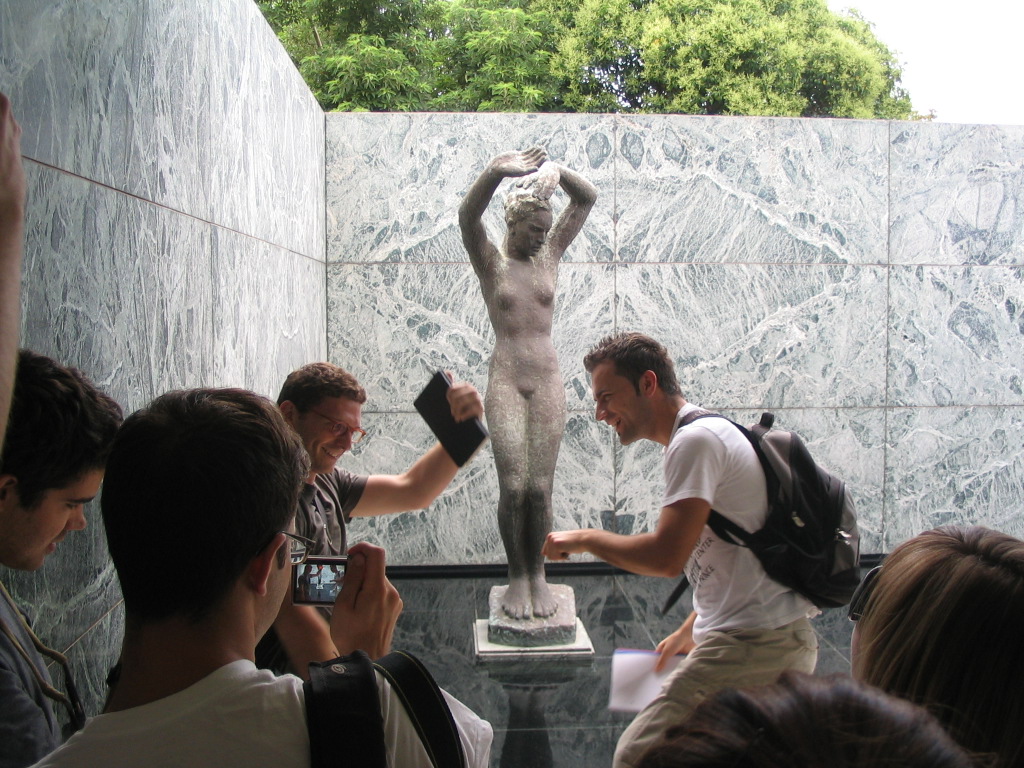
What is this I don't even
9707

In back, the Pavilion gives way to junglistic vegetation.
9708
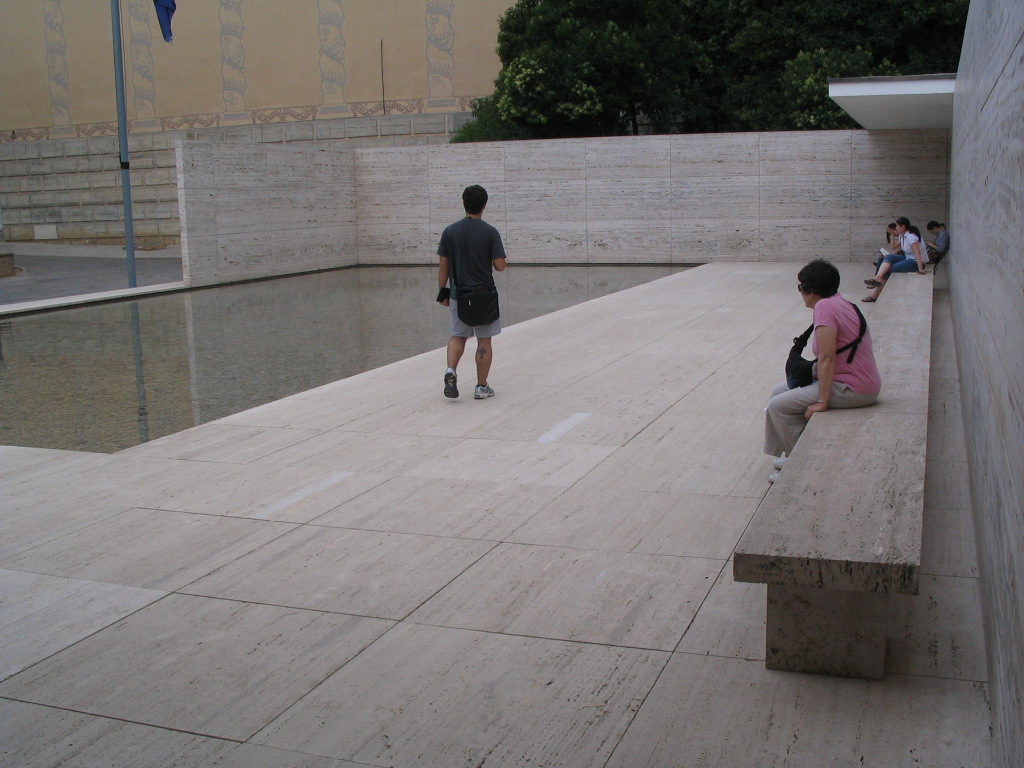
The south pool is a serene place.
9714
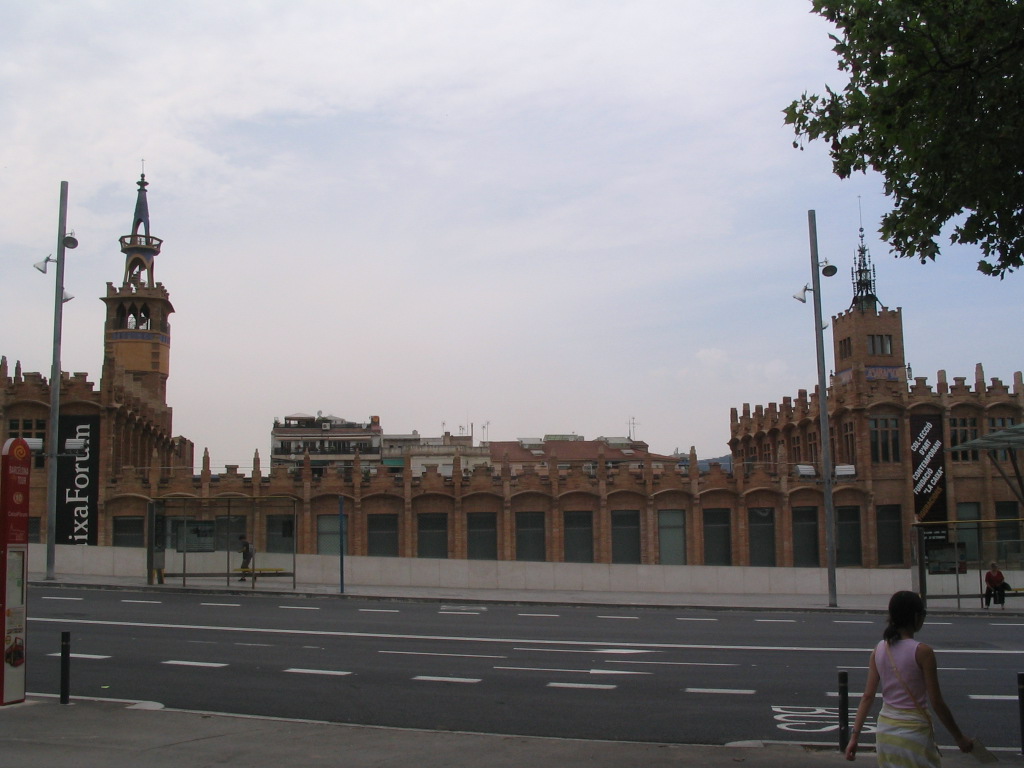
Just across the way is CaixaForum, an art center housed in a cool old factory designed by Josep Puig i Cadafalch, one of the preeminent Catalan Modernista architects, and built in 1911. Arata Isozaki designed the conversion of the building into its current use in 2002.
9720
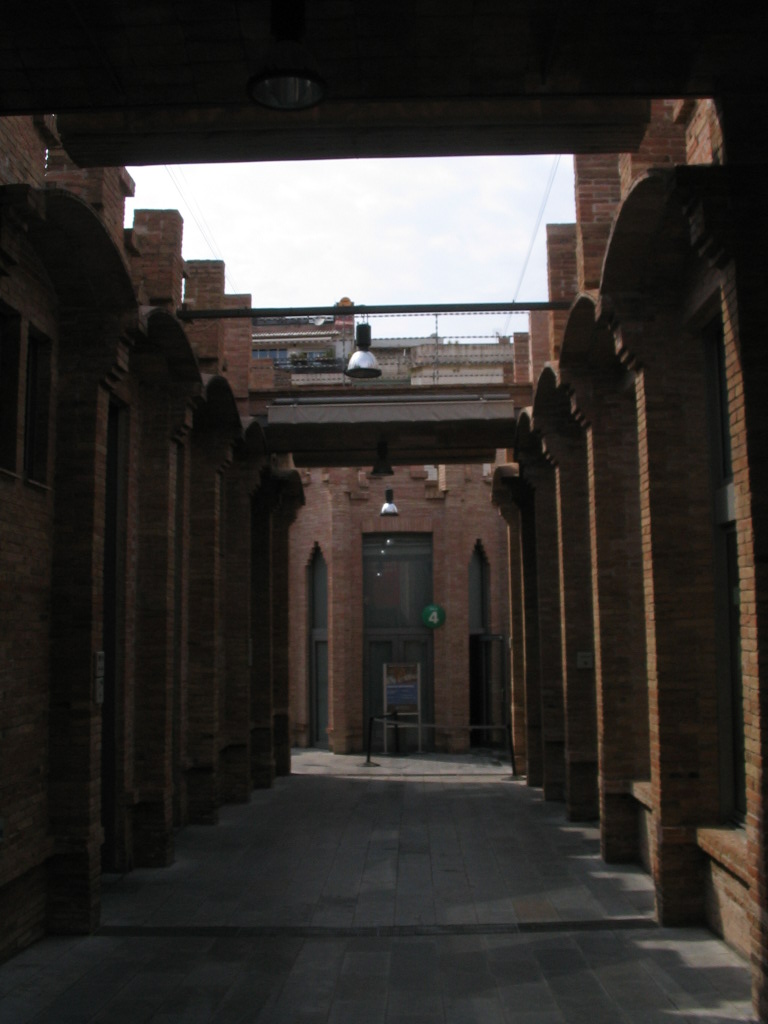
We took a quick look around, mostly in the inner-exterior spaces.
9723

Isozaki's addition, including the dendritic entry canopy.
9725

A full view of the canopy from the street.
9726
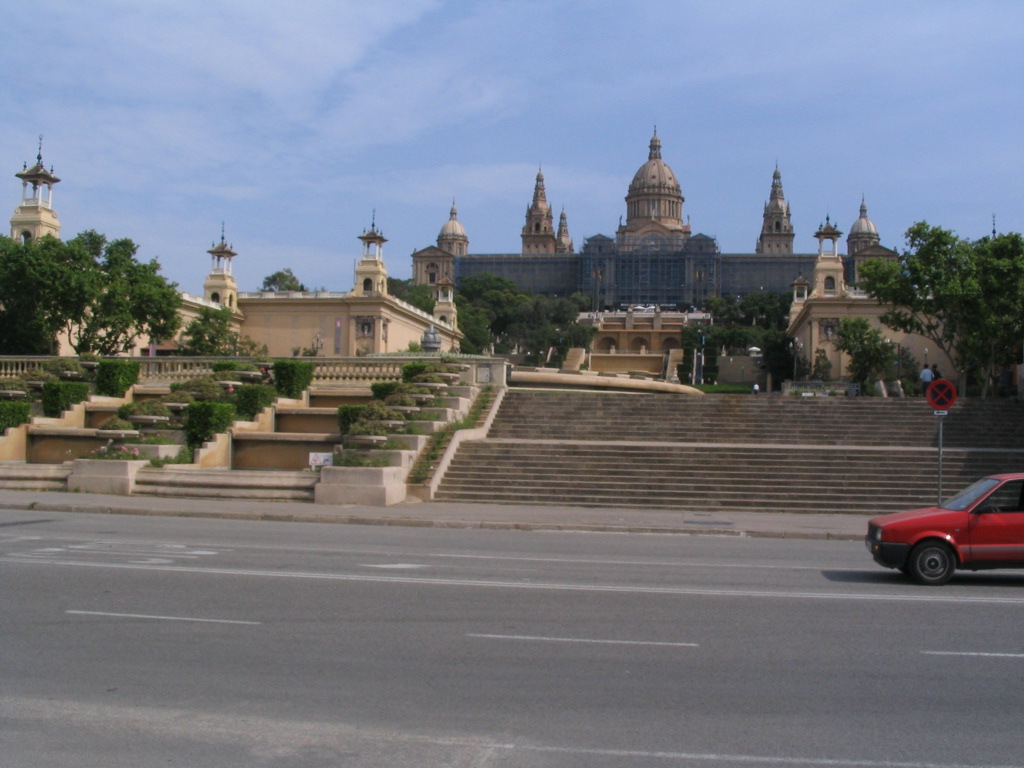
A view of the Palau Nacional approaching axiality.
9727
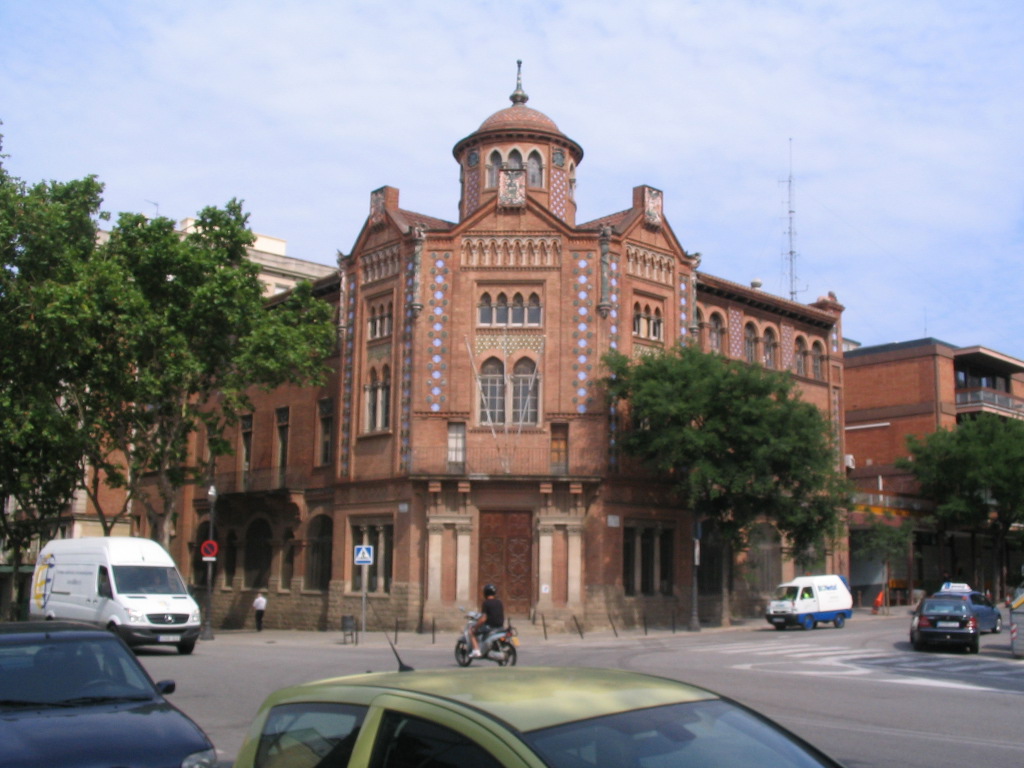
Another neat old building along Av. Rius i Taulet, at the corner of Carrer Guàrdia Urbana.